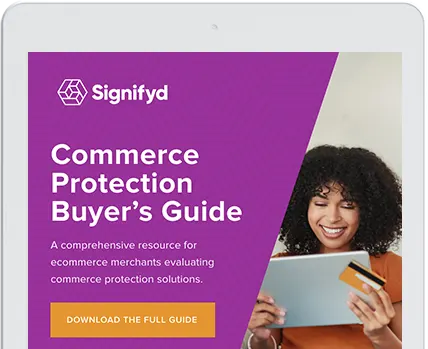The digitization of retail has imposed both blessings and curses on retail chief financial officers (CFOs). Digital payments now make up one-fifth of all their transactions. And those digital transactions today bring in more than half of their annual revenue. Those are the good things, according to the Nexis/Lexis 2024 “True Cost of Fraud” report.
But digital channels also account for more than half (53%) of retailers’ losses due to fraud, and pure online retailers suffer nearly 40% more fraudulent transactions than mostly brick-and-mortar ones, says Nexis/Lexis.
Added to that, the role of the CFO is changing. CFOs today must manage the integration of new technologies, strategically innovate business functions, and stay on top of economic trends and shifting consumer behavior.
And although preventing fraud has traditionally been a retail CFO responsibility and many CFOs have faced the daunting task of predicting the cost of fraud, risk management has not always broken through as a top priority.
That needs to change.
Three levers for fighting fraud: Cost, business opportunity and customer experience
The argument for building up large, internal anti-fraud infrastructures and personnel has historically been to curtail the money lost and expenses incurred due to fraud. In other words, avoid costs.
But there are two other aspects of fraud that CFOs must consider. Those are the potential for fraud management to optimize revenue the nexus between smart fraud prevention and improved customer experiences.
CFOs have long focused on the cost side of the fraud prevention equation — fraud losses and their bottom line cost. According to the Lexis/Nexis study, each instance of retail fraud results in out-of-pocket costs that are three times the face value of the products stolen or lost.
Cost of fraud, sure. But what about leaking revenue?
But fraud also limits merchants’ opportunities to maximize sales revenues. When a good customer gets mistakenly turned away because of suspected fraud, you suffer a quantifiable loss of revenue because you don’t sell the product — or products — they wanted to purchase.
Not only that, but the cost of acquiring that disappointed customer was squandered — no small issue with the cost of customer acquisition soaring.
And then there’s customer experience. Today, customer loyalty suffers when good customers are erroneously denied, or when it’s too much bother to prove their authenticity through cumbersome payment gateways, clumsy fraud management processes, or overly intrusive two-factor authentication.
Fraud protection is a customer-experience driver
Signifyd CFO Jason Eglit says those working to manage ecommerce risk do themselves a disservice when they ground the dialogue in fraud.
Antonio Colicchio, Abercrombie & Fitch vice president, retuns, fraud & abuse, talked at Signifyd FLOW Summit 2024 about the new ways retail CFOs can assess and appreciate customer lifetime value. Company leaders who need to justify spending to build lasting loyalty now have the tools to make a defensible case.
To see Antonio Colicchio’s full session and the rest of the FLOW Summit 2024 presentations, visit Signifyd’s on-demand FLOW video page.
“A much better starting point,” he said of those promoting anti-fraud solutions, “would be to explain how we can help CFOs deliver the best possible experiences to good customers — and, by the way, we’ll take care of fraud for you.”
Fraud protection has evolved. Have you?
There are three distinct generations of fraud prevention solutions that are still used by retailers today: Manual review, often coupled with static fraud filters; rules-based scoring solutions; and maturing next-generation services that take advantage of AI and machine learning to provide CFOs with a reliable way of predicting the cost of fraud.
Manual review still, well, rules for some
When it comes to anti-fraud strategy, manual review is still a foundational solution for a significant portion of fraud protection efforts. The Merchant Fraud Council (MRC) recently surveyed 1,100 online brands concerning fraud practices. As a group, the merchants on average manually reviewed at least 25% of their orders, according to the MRC’s 2024 Global Ecommerce Payments and Fraud report. The report noted that the extent to which any particular merchant relied on manual review varied widely — so for some merchants manual review is a much larger part of their fraud protection strategy.
A significant portion of the surveyed merchants understand that a high percentage of manual review is far from ideal — given the cost, the margin for error and the detrimental effects on fulfillment and the overall customer experience. Nearly a third (32%) of respondents listed reducing or eliminating manual review as a top improvement area during the next year for fraud management.
Scoring systems still leave merchants guessing
Second-generation scoring systems use rules to generate risk scores for transactions. Merchants decide whether to ship an order or not, based on the score. But the rules running such systems tend to be too conservative, ignore the nuances of more sophisticated fraud tactics and falsely decline unacceptably high numbers of legitimate orders.
That means you are literally refusing to take the money of good — maybe even your best — customers.
Guaranteed fraud protection is the state-of-the-art
Today’s third-generation, machine learning-based fraud protection platforms like Signifyd use sophisticated, evolving AI-based algorithms that “learn” as they process orders. The best among such systems provide a 100% financial guarantee on every order they approve. If an approved order turns out to be fraudulent, the solution provider reimburses the retailer for the full cost incurred.
This takes a huge burden off the CFO. Signifyd, for example, eliminates fear of fraud from all a merchant’s transaction decisions. The merchant can then focus on maximizing profitable revenue and boosting customer loyalty rather than just containing costs.
In effect, guaranteed, machine-learning systems like Signifyd shift liability for fraud losses from the merchant, to themselves. They guarantee brands won’t suffer.
But more than that, the guarantee means retail CFOs have a way of predicting the cost of fraud. Since these models generally charge a small percentage of each approved order, CFOs have the numbers they need to calculate precisely what the cost of fraud will be in a given month, quarter or year.
Protect against dubious customers
So-called “friendly fraud,” or first-party fraud, is increasing every year. This is when actual customers — not professional fraudsters — try to take advantage of retailers by claiming that an item was never received (INR) or that a product was “significantly not as described” (SNAD).
In the MRC’s recent survey of retailers, merchants named first-party fraud and abuse as the leading threat waged against their businesses. In fact, 60% reported seeing an increase in first-party fraud during the previous year — and half of those said the annual increase was at least 25%.
On the consumer side, 25% of consumers surveyed admitted to falsely claiming that a product they purchased online was defective or incomplete in order to keep the product and get a refund or a second item for free. The survey, conducted by OnePoll for Signifyd, also found that 21% of consumers said a product never arrived when it did, in order to keep the item for free.
Signifyd extends its guarantee to those sorts of consumer abuse chargebacks. It’s a distinction worth considering when choosing your anti-fraud solution provider.
What CFOs should look for in a commerce protection platform
CFOs looking for a way of lowering risk management costs, increasing approval rates, protecting the business from fraud and predicting the cost of fraud, should consider a solution offering guaranteed fraud protection and a liability shift for all manner of chargebacks.
Signifyd, for instance, provides a 100% financial guarantee against fraud on every approved order. It extends its guarantee to consumer abuse chargebacks, such as false item not received and significantly not as described claims. Its Commerce Protection Platform also provides a customizable way to protect against abusive and fraudulent returns while tackling the challenge of promotion abuse and unauthorized resellers.
Together, these features promote fearless commerce and provide shoppers with an excellent experience that builds customer lifetime value, all while establishing a predictable cost of fraud.
In short, this is a new era of commerce and successful retail CFOs understand that that calls for a new way of managing risk from the C-suite.
The good news? The answers are out there.
Looking for a solid way of predicting the cost of fraud? Let’s talk.








